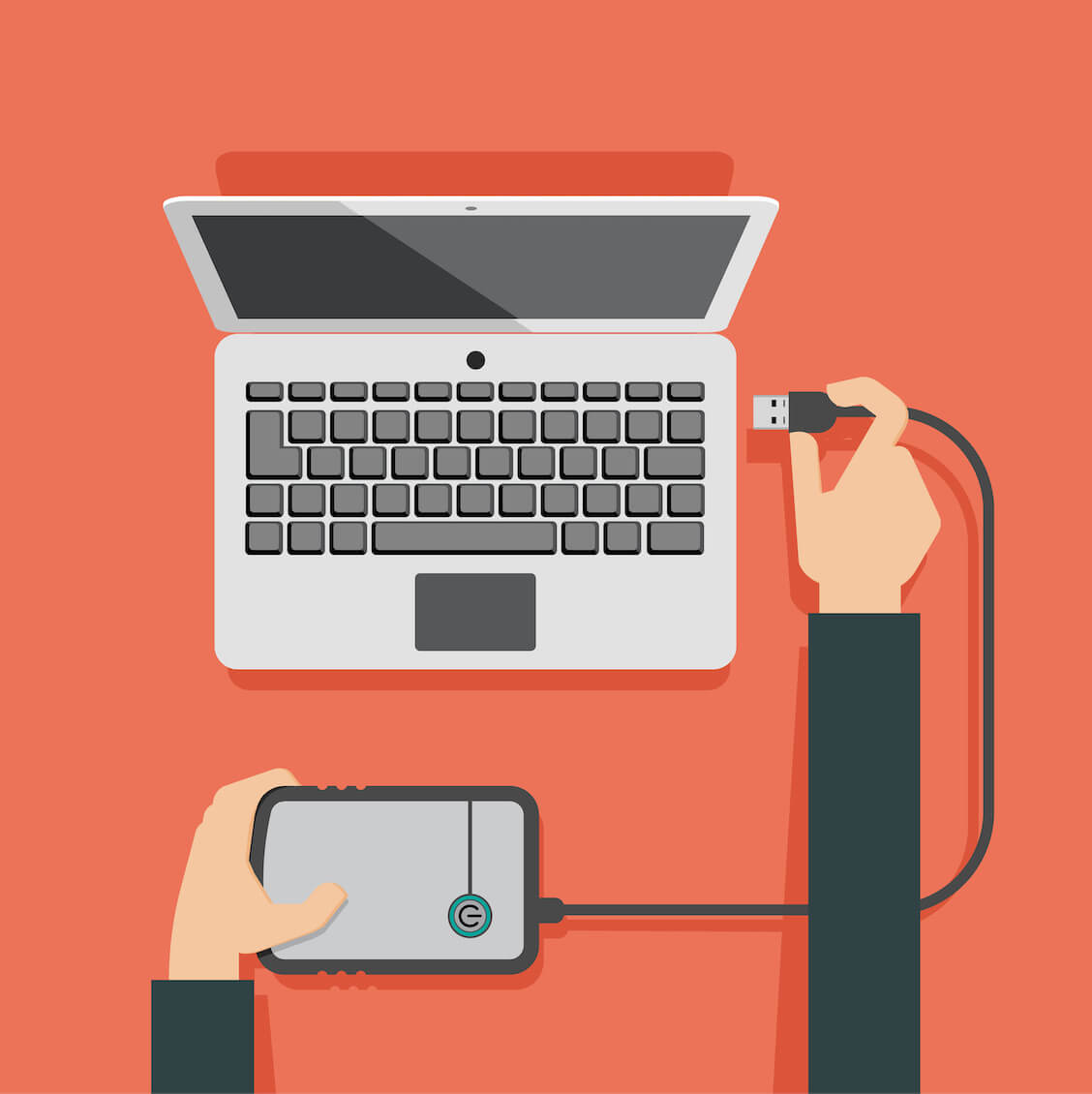- Data Backup: An Overview
- What Is the Best Backup Option?
- Why Backup to an External Hard Drive?
- Choosing the Right External Hard Drive
- Preparing Your Windows 10 PC for Backup
- Initiating the Backup Process
- Configuring Backup Settings
- Scheduling Regular Backups
- Verifying the Backup Integrity
- Restoring Files from the External Hard Drive
- Additional Backup Tips
- Conclusion
- FAQs
- What Is a Data Backup?
- Can I Access My Backup Files on Another Computer?
- Is an External SSD Good for Backup?
- How Often Should I Back Up My Windows 10 PC?
- What Should I Back Up on My PC?
- Can I Use My Computer While It’s Backing Up?
- I’ve Run Out of Space on My External Hard Drive, What Should I Do?
- Can I Back Up Multiple Computers on the Same External Hard Drive?
Data is the lifeblood of our digital lives, from precious family photos to important work documents. There’s nothing worse than experiencing that stomach-churning moment when you realize your files are gone, victims of a system crash, accidental deletion, or malware.
Cybercrime Magazine states that a business falls victim to a ransomware attack every 11 seconds. These attacks often lock users out of their files, making a backup the only way to regain access without paying a ransom.
According to Backblaze, the proportion of computer users who backup all their data has seen a steady rise over the years, climbing from 65% in 2008 to 76% in 2018.
That’s why we recommend you also switch sides and join the group of regular backupers!
In this guide, we’ll focus on windows 10 backup techniques, particularly how to backup computer on external hard drive!
Data Backup: An Overview
So, what is a data backup? Simply put, it’s making a second copy of your valuable data, so if disaster strikes, you’re not left high and dry. The backup process involves copying your files to another location, like an external drive or the cloud.
There are three primary types of backups:
- Full Backup: As the name suggests, a full backup copies every file and folder in your system. While it offers the most comprehensive protection, it’s also time and space-intensive.
- Incremental Backup: This type of backup only copies files that have changed or been added since the last backup, whether that was a full or incremental one. It’s quicker and more storage-friendly but can be more complex to restore from.
- Differential Backup: This backup copies files that have changed or been added since the last full backup. It strikes a balance between full and incremental backups.
These days, our options for data backup locations have expanded. Some prefer cloud-based backups, while others love the control and convenience of an external hard drive backup. In this guide, we’re focusing on how to backup windows 10 computer to an external hard drive.
What Is the Best Backup Option?
The “best” backup option largely depends on your needs, budget, and comfort level with the backup process. If you’ve got fast internet and don’t mind recurring costs, cloud backups are convenient and provide access to your files from anywhere.
On the other hand, if you’re looking for a one-time investment and prefer having your data in your hands, learning how to backup windows 10 to external drive is a great option. With an external drive, your files are always accessible, no internet required, and you have total control over your data.

In the end, the best backup solution could be a combination of both – backing up your most important files to an external drive for easy access, and also to the cloud for an extra layer of protection.
Whether you’re a casual user or a hard-working professional, the key is to choose a backup solution that’s easy to use, reliable, and fits your lifestyle. The rule of thumb is: if your data is only in one place, it’s not truly safe.
So, let’s take the first step towards data security. Stay tuned as we dive into the practical aspects of backing up your Windows 10 PC to an external drive.
Related: How to Make a Reliable Backup of Your Windows 10 PC
Why Backup to an External Hard Drive?
We’ve established the importance of backing up files, but why opt for an external hard drive? Here are a few reasons:
- Control: You retain complete control over your data. No need to worry about third-party services experiencing outages or breaches.
- Speed: With a fast USB or Thunderbolt connection, backing up and restoring files can be lightning quick.
- Cost: Once you’ve purchased the drive, there are no further costs. Contrast this with cloud services which generally require monthly or yearly fees.
- Accessibility: Even without an internet connection, your files are always within reach.
Choosing the Right External Hard Drive
Before we dive into how to backup windows 10, you’ll need to select the right external hard drive. There are a few factors to consider:
Storage Size: Choose a drive with enough space to store all your important files. If your PC has 1TB of data, opt for a 2TB drive to allow room for growth.
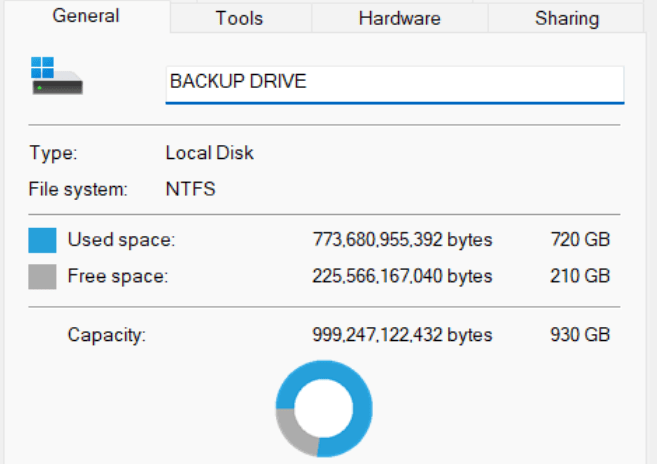
- Speed: SSD drives are faster but more expensive. Traditional HDD drives are slower but offer larger capacity for less money.
- Durability: Look for a drive that is sturdy and durable, especially if you plan to carry it around.
- Price: Balance your budget with your backup needs. While it’s tempting to buy the cheapest drive, remember the old saying: “you get what you pay for.
Preparing Your Windows 10 PC for Backup
Now that we’ve chosen our drive, we’re ready to start backing up your hard drive to the external drive. But before we begin, we should get our PC ready:
- Update: Make sure your system is fully updated. This helps avoid potential compatibility issues during the backup process.
- Organize: Clean up your files and folders. Get rid of unnecessary files. Not only will this make the backup faster, but it also helps keep your backup drive tidy.
- Decide: Determine what needs to be backed up. While it’s easier to simply backup everything, you may want to focus on the most crucial files.
Remember, the goal of backing up files windows 10 is to ensure that if anything happens to your computer, you won’t lose what’s most important to you. Preparation is the first step towards achieving this goal.
Initiating the Backup Process
With our preparations done, let’s jump into the actual process of backing up files to external hard drive. This may seem like a technical hurdle, but with our step-by-step guide, you’ll realize it’s a breeze:
- Connect the Drive: Plug your external hard drive into your computer via the USB port.
- Launch Backup Tool: Type in “Control Panel” in search, hit Enter, then go to System and Security.
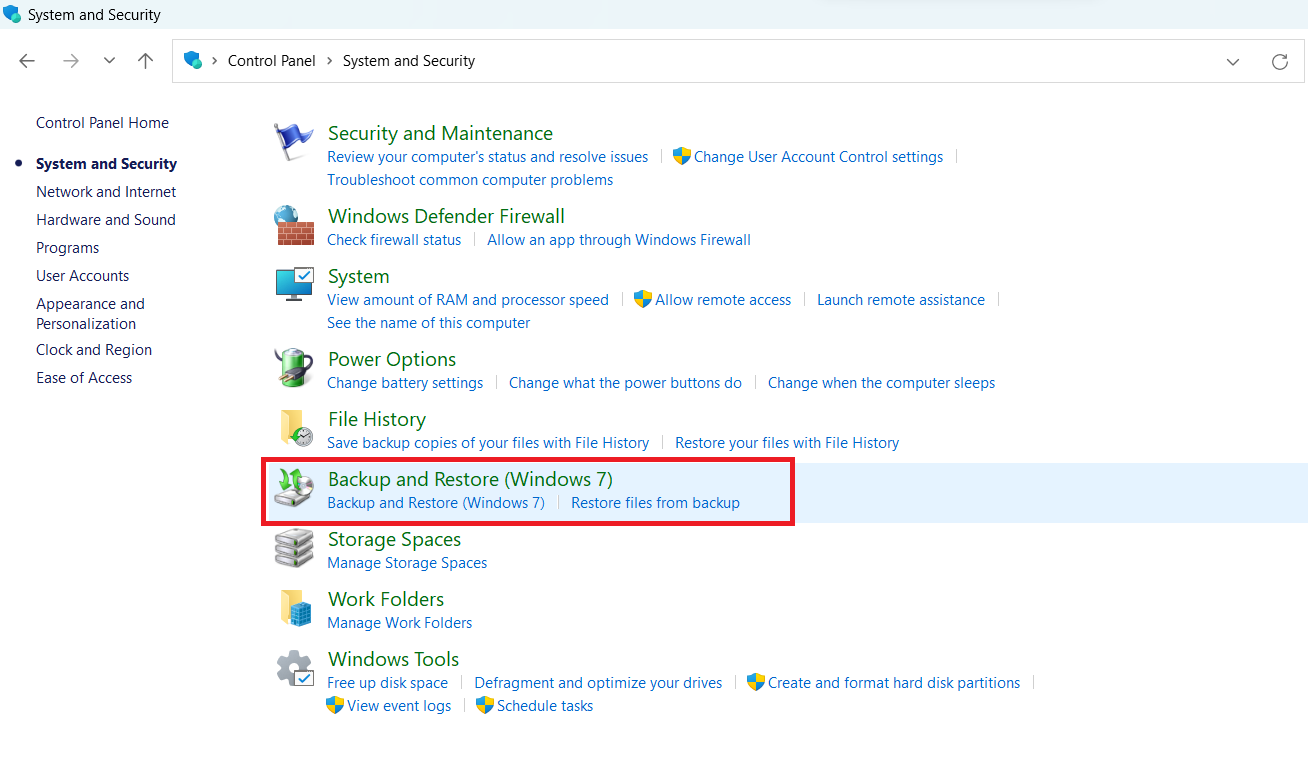
- Choose Backup and Restore
- Choose the Drive: In the Backup section, click on “Set up backup” and select your external hard drive.
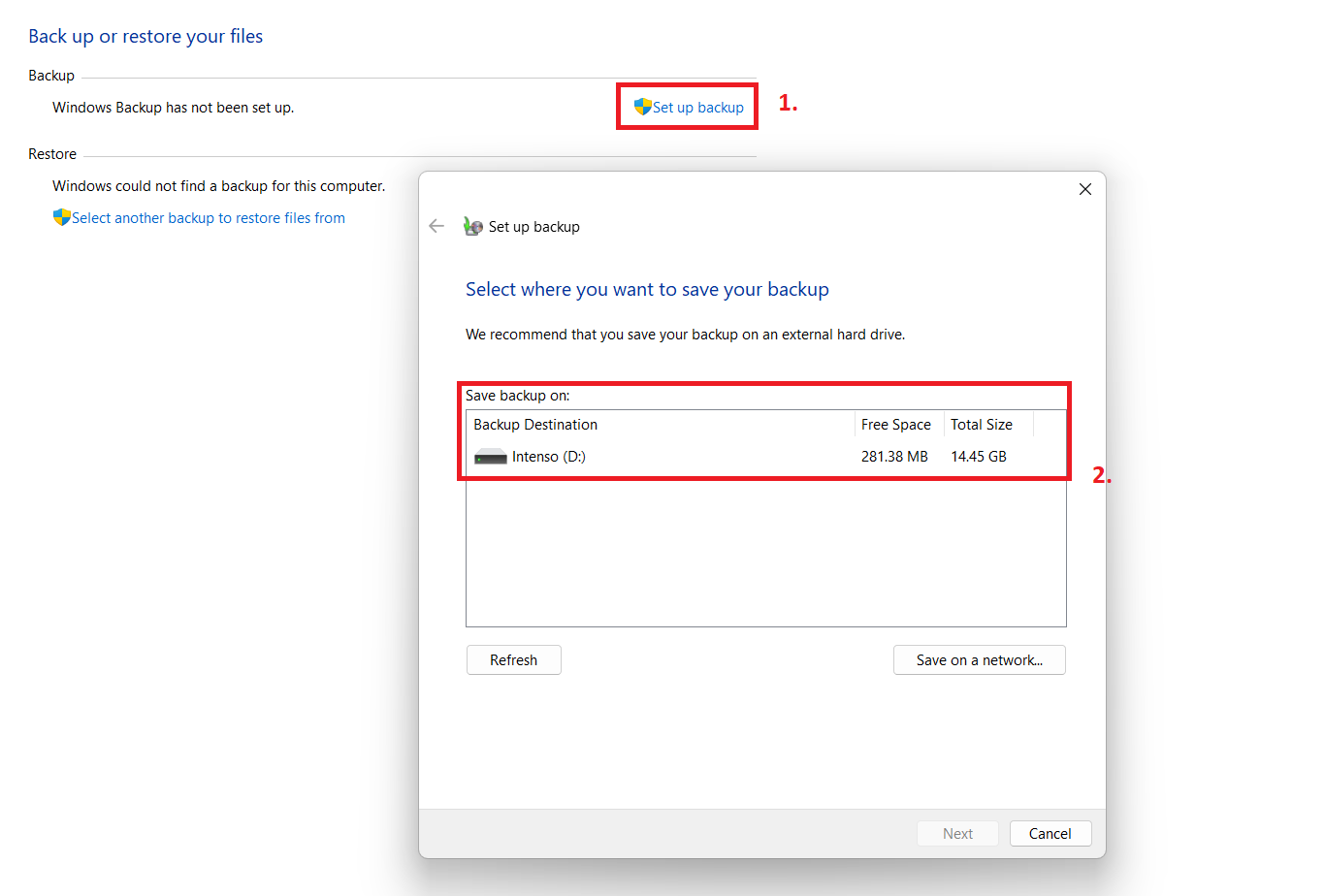
Now, your PC is set to backup pc automatically, and your files will start being copied onto the external drive. This process might take a while, depending on the amount of data you’re backing up.
Configuring Backup Settings
The beauty of Windows 10 backup lies in its versatility. You’re not just stuck with one way of doing things; you have the power to customize your backup settings. Here’s how to backup computer on external hard drive tailored to your specific needs:
- Selecting Files: In the Backup Settings, click on “More options”. Here, you can choose which folders to backup. Perhaps you only want to backup your documents and photos, leaving out other less important files.
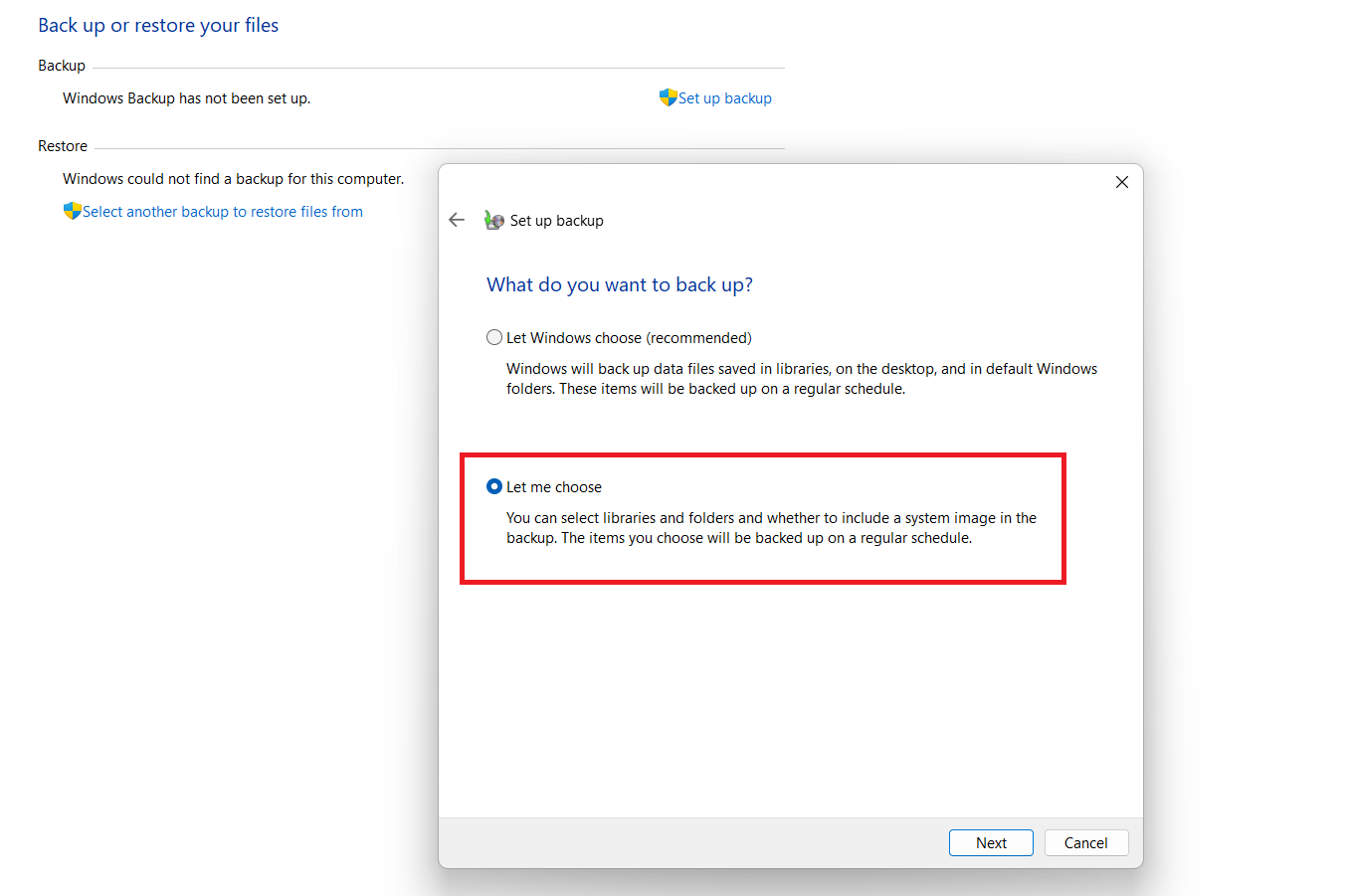
- Frequency of Backup: Also in “More options”, you can set how often you want your files to be backed up. Daily? Weekly? You decide.
- Automatic Backup: If you want Windows to manage space on your backup drive and automatically delete older backups, leave the “Automatically back up my files” option turned on.
But what if you want to backup Windows 10 to external drive completely, not just your files? Good news: Windows 10 has you covered with “System Image Backup“. This option, located in the bottom left of the Backup Settings screen, lets you create a complete copy of your system, settings and all.
In a nutshell, the backup settings in Windows 10 give you control over what, when and how your data is backed up. And remember, it’s always better to have a backup you don’t need than to need a backup you don’t have.
Scheduling Regular Backups

The one-off backup you’ve just completed is an excellent start, but data security is an ongoing commitment. That’s why Windows 10 backup allows you to schedule regular backups.
You can determine the frequency in the “Backup Options” menu. Perhaps you want to backup weekly, or maybe daily backups are more your speed. The choice is yours. The key is to ensure your most recent data always has a second home.
Verifying the Backup Integrity
Verifying your backup is like double-checking your parachute before skydiving – it’s crucial! After you’ve learned how to backup computer on external hard drive, you need to know how to check if the backup was successful.
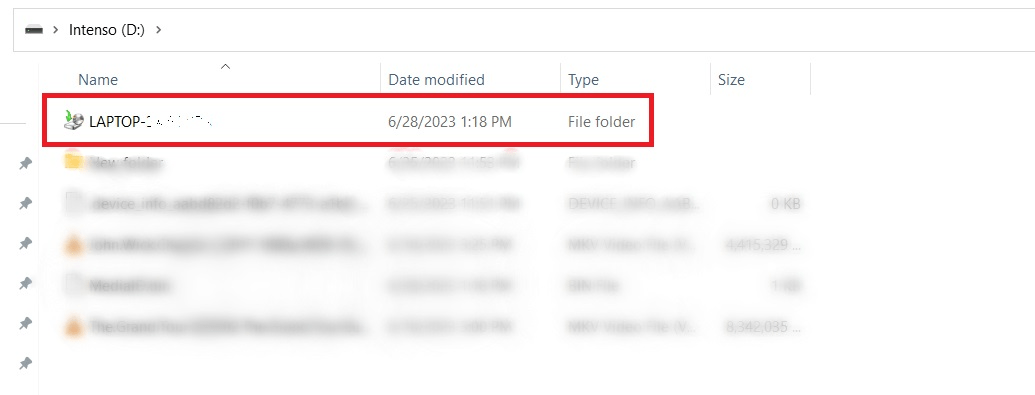
In Windows 10, go to your external hard drive via the File Explorer and locate the backup. Inside, you should find copies of your backed up files and folders. Have a browse, open some files, and make sure everything is as it should be.
Remember, a backup is only as good as its restore capability. By verifying the integrity of your backup, you’re ensuring your data can be successfully restored when needed.
Restoring Files from the External Hard Drive
The moment of truth in any backup strategy is the restore process. Here’s how to backup windows 10 computer and restore data from an external hard drive:
Locating Backup: Plug in your external hard drive and navigate to the backup.
Finding Files: Inside, you’ll see your files and folders organized exactly how they were on your PC. Navigate to the file or folder you want to restore.
Restoring: Right-click on the file or folder and select “Restore Options”. The file or folder will then be restored to its original location.
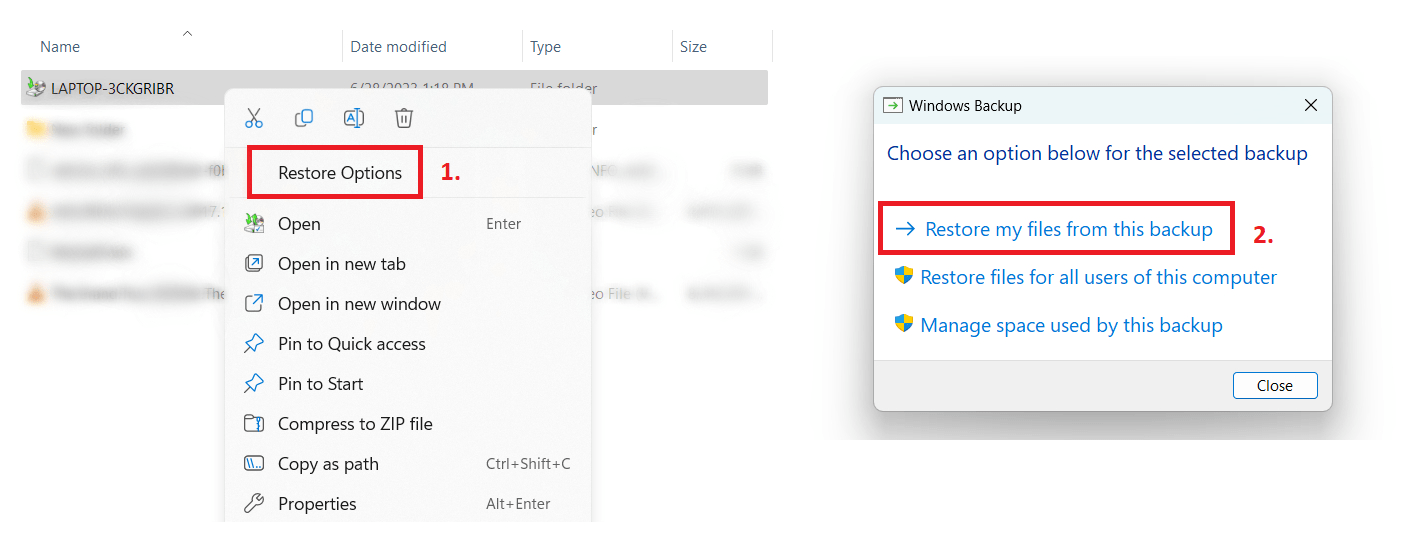
Backing up your data is a bit like insurance; it seems unnecessary until the day you desperately need it. By following these steps, you’re not just safeguarding your data; you’re securing peace of mind.
Additional Backup Tips
As we wrap up our guide on backup windows 10 to external drive, let’s touch on a few additional backup tips:
- Don’t put all your eggs in one basket. Consider having multiple backup drives or even using cloud storage for an extra layer of security.
- Routinely check your backup drive for any signs of failure. A failed backup drive is as good as no backup.
- Keep your external hard drive in a safe place. Preferably it should be stored separately from your computer to protect against theft or disaster.
By following these tips, you’re adding extra layers of safety to your backup strategy.
Backup to Cloud for Additional Security
Backing up to an external hard drive is all good, but you can always lose your hard drive! The best approach is to have multiple backups and that’s where Auslogics BitReplica comes in!
As a comprehensive solution designed to protect your important files, Auslogics BitReplica is a great ally in any backup strategy, especially for Windows users. Bitreplica supports full system backups as well as backing up individual files or folders to a cloud such as Google Drive, OneDrive and Dropbox!
In essence, Auslogics BitReplica not only provides a robust mechanism to backup your Windows system or individual files, but it also eases the process, making data backup a less daunting task for everyday users!
Managing Your External Hard Drive
The lifeblood of your backup strategy is your external hard drive, so it’s crucial you manage it effectively. Here are a few tips for successful drive management:
- Keep It Clean: Just like your computer, your external hard drive benefits from regular cleanups. Remove outdated backups, temporary files, and unnecessary data.
- Check for Errors: Use the built-in Windows “System File Checker” tool. This handy feature can spot and rectify potential issues before they turn into real problems.
- Safe Removal: Always “eject” your external hard drive before unplugging it. This prevents potential data corruption.
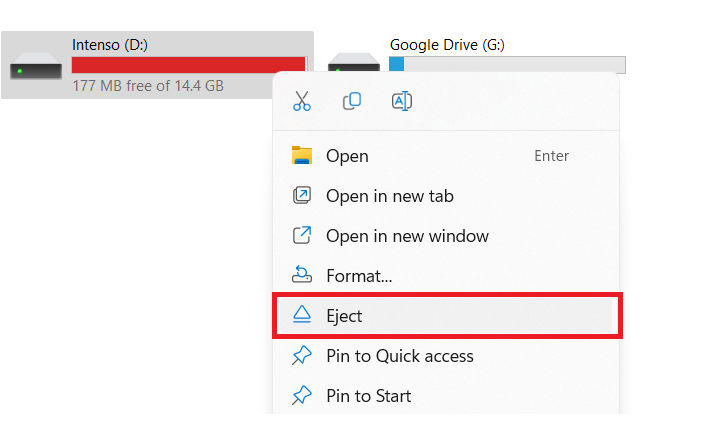
- Stay Organized: Try to maintain a tidy folder structure. This makes it easier to locate specific backups when you need them.
Remember, managing your external hard drive effectively ensures it remains a reliable vessel for your valuable data. With these practices in place, you’ll have a healthy hard drive and a robust backup system.
Conclusion
The process of backing up files may seem intimidating at first, but once you get the hang of it, it becomes second nature. Taking the time to learn about backing up hard drive to external drive is an investment in your data’s safety and your peace of mind. Just remember the golden rule of data protection: 2 is 1, and 1 is none. Having multiple copies of your data, ideally in different locations, is the best defense against data loss.
FAQs
Here are some commonly asked questions about backing up files to external hard drive.
What Is a Data Backup?
A data backup is a copy of your files and information, stored separately from your computer. It’s a safeguard to restore your data if your computer gets damaged, lost, or attacked by a virus.
Can I Access My Backup Files on Another Computer?
Yes, you can. Once the backup drive is plugged into another computer, your files can be accessed just like any other file on a normal hard drive, given the computers use the same operating system.
Is an External SSD Good for Backup?
Absolutely, an external SSD (Solid State Drive) is a great choice for backup. They’re generally faster and more durable than traditional HDDs (Hard Disk Drives), but they can be more expensive.
How Often Should I Back Up My Windows 10 PC?
This really depends on how often you create or modify files. However, a general rule of thumb is to back up your PC once a week. For critical data, consider daily backups.
What Should I Back Up on My PC?
Focus on backing up files that are difficult or impossible to replace: documents, photos, emails and application data. There’s usually no need to backup system files as these can be replaced by reinstalling the operating system.
Why Can’t I See My files on the external hard drive after backing up?
Sometimes, files might be hidden. Go to the “View” tab in File Explorer and check the “Hidden items” box.
Can I Use My Computer While It’s Backing Up?
Yes, you can use your computer while it’s backing up. However, for faster backup, it’s better not to run other heavy applications at the same time.
I’ve Run Out of Space on My External Hard Drive, What Should I Do?
You could either buy a larger external hard drive or clean up your existing one. Remove older backups that are no longer necessary to free up space.
Can I Back Up Multiple Computers on the Same External Hard Drive?
Yes, you can. Just make sure your hard drive has enough space to accommodate the data from all computers.
The journey to data security might seem daunting, but it’s a road well worth traveling. With these tips and tricks in hand, you are now ready to take the reins of your digital destiny and safeguard your precious data.



